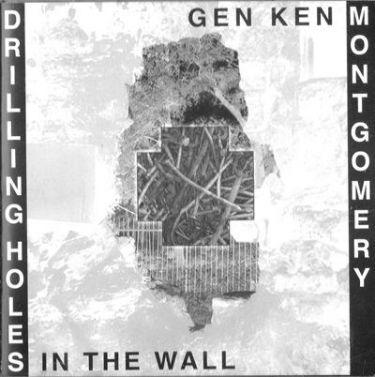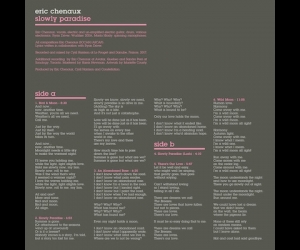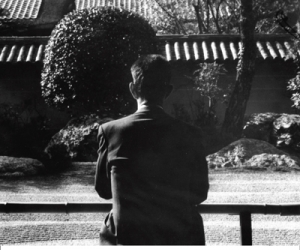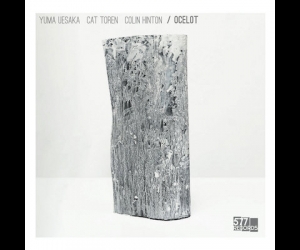
Drilling Holes in the Wall and Balls are the first releases of sound artist Ken Montgomery's work since Pondfloorsample. The sounds on Drilling derive mostly from modified toy synthesizers, hooked to a variety of electronic devices such as a film projector or a lamination machine. With these, he constructs pieces that move freely between the worlds of sound art and improvised music. Montgomery works along paths determined by the instruments and appliances he uses, but the overall structure is open. Deliberate variations in density and texture do occur as do climaxes, but the pieces often take unexpected turns, and tend to end suddenly.
Montgomery chooses sounds that he enjoys. These are often reminiscent of machinery, without clearly defined pitch and proceeding with slow-grinding, slightly irregular rhythms. They are shot through with whooshes, roars, and cracklings that one would associate with the early days of electronic music. Efficaciously layering the various components, Montomery achieves considerable depth in the sound image.
Most of the album is linked to Montgomery's experiences of Berlin. He composed the title track during a stay in the city when the Wall came down. The final piece Don't Bring Those Things came out of a trouble-riddled border crossing from West to East while the Wall was still standing. While he was crossing to go and do a performance, the border guards prevented him from taking his modified keyboard across. He borrowed one from East-Berlin friends for the concert, in which he reiterated the phrase that his interrogators had thrown at him. In a gloriously raucous way this is a meditative piece—and surprisingly melodic in between screeches, electronic stutterings, and siren-like wailings.
The mini CD-R presents Montgomery manipulating polystyrene balls. He rummages around in a bag filled with them and has them roll around on metal objects. There are prolonged squeaks moving from right to left and back; there are clangs, some discreet, others more pronounced; there is a dry, fluttery rustling. The range of sounds produced by Montgomery's steady actions are limited, but his variations make the development on this seventeen-minute recording unpredictable, an attribute that maintains even after several hearings.
However different these two discs may be in the sounds used, the attitude behind them is quite similar. There is a versatile and attentive mind operating here, and an exceptional set of ears. Montgomery manages to coax sonic magic out of apparently mundane objects. He makes the lowly shine with an extraordinary depth and lustre.


